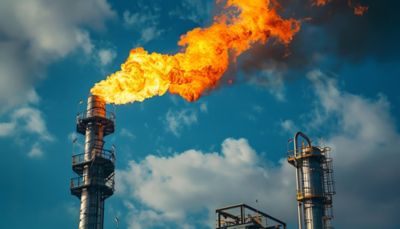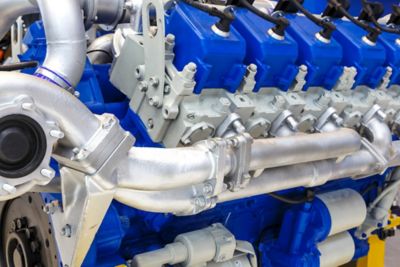-
United States -
United Kingdom -
India -
France -
Deutschland -
Italia -
日本 -
대한민국 -
中国 -
台灣
-
Ansysは、シミュレーションエンジニアリングソフトウェアを学生に無償で提供することで、未来を拓く学生たちの助けとなることを目指しています。
-
Ansysは、シミュレーションエンジニアリングソフトウェアを学生に無償で提供することで、未来を拓く学生たちの助けとなることを目指しています。
-
Ansysは、シミュレーションエンジニアリングソフトウェアを学生に無償で提供することで、未来を拓く学生たちの助けとなることを目指しています。
燃焼とは
燃焼とは、熱と光(一般的には火炎)の形でエネルギーが生成される、燃料と酸化剤(通常は酸素)の間で生じる化学反応の一種です。燃焼は、消費するエネルギーよりも生成される熱エネルギーが多いことから発熱反応となります。(電子を受け取る)還元と(電子を失う)酸化を伴うため、酸化還元反応にも分類されます。
ほとんどの燃焼反応は、燃焼プロセスを開始するために火花または火炎からのエネルギーを必要とします。化学反応により、酸化プロセスを継続するのに十分なエネルギーが生成される場合、それは自己持続燃焼と呼ばれます。
燃焼反応は、建物の暖房、食品の調理、自動車の動力、航空機の推進力、ロケットの発射、そして発電に利用されています。炭化水素ベースの燃焼、特に化石燃料の使用が増加するに伴い、地球の大気中に温室効果をもたらす炭素含有分子が増加しています。
そのため、燃焼の研究である燃焼科学の重要度はますます高まっています。科学者やエンジニアは、排出量や有害な副生成物を削減し、持続可能性に優れた、または安価な可燃性物質を燃料源として利用する各種の燃料や酸化体を用いた、より効率的な反応の研究に取り組んでいます。燃焼プロセスを最適化することで、性能、コスト、排出量が大幅に改善できます。
燃焼の化学反応
酸化還元反応は、2つの物質間で電子が移動する反応です。特定の原子または分子内の電子の数は、酸化数と呼ばれます。酸化還元反応は、光合成、呼吸、腐食や錆、燃焼など、生命の基本的な機能の基礎となります。
一般的な燃焼反応について説明する前に、燃焼の化学反応を表すための重要な用語をいくつか紹介します。
- 酸化剤: 電子を受け入れるイオンまたは分子。酸化剤によって、他の物質中の分子から電子が除去されます(酸化)。
- 還元剤: 電子を供与するイオンまたは分子。還元剤によって、他の物質中の分子に電子が追加されます(還元)。
- 燃料: 還元剤で構成される材料。最も基本的な燃料は水素分子です。ほとんどの燃料は炭化水素ですが、一部の金属やリンのような反応性の高い元素も、燃焼反応の燃料として使用できます。
- 排出(量): 燃焼の生成物であるイオンと分子。燃焼の結果として望ましいのは熱と光ですが、燃焼科学では排出される物質を理解して排出量を最小限に抑えることに焦点を置いています。
- 炭化水素: 水素と炭素を含む分子。多くの場合、他の有機化合物や無機化合物と組み合わされます。炭化水素は、木材などの物質の成長過程で生成されます。化石燃料は、燃焼に使用される炭化水素の最も一般的な形態です。化石燃料は、数百万年にわたって熱と圧力にさらされ、石油、石炭、天然ガスなどの複雑な分子として形成された有機炭化水素です。
- 炭素酸化物: 炭素原子と酸素原子のみを含む分子。通常は、一酸化炭素(CO)または二酸化炭素(CO2)です。炭素酸化物は、炭素を含む燃料の燃焼から最も一般的に排出される物質です。
- 窒素酸化物: 窒素原子と酸素原子のみを含む分子。空気中での燃焼から生じる最も一般的な窒素酸化物は、一酸化窒素(NO)と二酸化窒素(NO2)です。NOとNO2の任意の組み合わせは、NOxと呼ばれます。NOxは大気汚染の最も大きな原因です。
- 火炎: 燃焼中に加熱された複数の気体の組み合わせ。火炎の内側(炎心)は気体の酸化体と燃料の混合物で構成され、外側(火炎面)は燃焼反応が起こる場所です。この反応によって生成された熱が気体中の電子を励起し、励起した電子が崩壊してエネルギーレベルが低下すると、光子の形でエネルギーが放出されます。
- 触媒: 化学反応の速度を増加させる物質。燃焼で触媒材料を使用することで、より効率的な燃焼反応を、より低い温度で発生させ、NOxなどの不要な排出物を削減できます。
- 熱分解: 熱による物質の酸化を伴わない分解。燃焼では、液体燃料と固体燃料は気体に変換され、その気体が熱分解によって燃焼します。

燃焼の化学方程式
燃焼の最も単純な形態は、水素の燃焼です。2つの水素分子と1つの酸素分子が化合して水蒸気となります。
2H2 + O2 → 2H2O + 286 kJ/mol of heat
熱の形のエネルギーを得られるのは、酸素分子が二重結合により2つの原子から成るためです。熱を加えると、この結合が切断され、より多くのエネルギーが放出されます。
最も単純な炭化水素反応物はメタン( CH4)です。
CH4 + 2O2 → CO2 + 2H2O + 890 kJ/mol of heat
メタン分子は炭素原子と各水素原子の間に4つの単結合を有するので、メタンの燃焼では、モル当たりに生成される熱がより多くなります。
プロパン(C3H8)は、2つの炭素 - 炭素結合と、8つの水素 - 炭素結合を持ちます。
C3H8 + 5O2 → 3CO2 + 4H2O + 2,220 Kj/mol of heat
ガソリンは複雑な燃料ですが、一次還元体は、8個の炭素原子が18個の水素原子に結合しているオクタンです。これにより、7つの炭素 - 炭素結合と18個の水素 - 炭素結合が得られます。
2C8H18 + 25O2 → 16CO2 + 18H2O + 5,483 kJ/mol of heat
化学量論的燃焼反応は理論上は理想的であり、燃料と酸素の量が正確に一致するため、最大限の熱と燃焼効率を得られます。
排出量
完全燃焼では、燃焼によって排出される物質は水であり、炭素が存在する場合は水と二酸化炭素です。しかし、ほとんどの燃焼では他の分子が含まれていたり、不完全な反応や二次反応によって追加の排出物が生成されます。この不要な追加の排出物は汚染物質と呼ばれ、燃焼科学は、こうした不要な排出物の削減に重点を置いた研究です。
ほとんどのケースで、空気中の窒素は不活性であり、燃焼に関与しません。しかし、酸素は高い燃焼温度で窒素と結合してNOxを生成します。また、酸素の量が燃料と完全に反応するには少なすぎる場合は、二酸化炭素ではなく、一酸化炭素が生成されることがあります。揮発性有機化合物は、燃焼中に低温でも生成されます。これらの化合物は、沸点が低く、他の有機化学物質と容易に反応して、不要な汚染物質を生成します。
燃焼効率に影響する要因
燃焼効率は、さまざまな特性の影響を受けます。エンジニアは、燃焼を利用する特定の分野で熱力学の効率を高めるために、これらの要因を考慮しながら設計します。
- 燃料化学: 燃焼反応で放出されるエネルギーと排出物を決定付ける上で最も重要なものは、酸化される燃料の化学反応と分子組成です。分子結合に基づいて、燃焼を開始するために必要なエネルギーと、生成される熱の量が決まります。元素組成、特に燃料内の非炭化水素元素によって、生成される排出物の種類が決まります。そのため、燃料化学では合成ガス、バイオ燃料、再生可能なジェット燃料などの新しい燃料ソリューションを設計および改善し、燃料の化学特性を改善できる添加剤を探るための研究が進められています。また、エンジニアは、Ansys Model Fuel Libraryを活用することで、従来型の燃料だけでなく、最新の代替燃料の特性を簡単に確認できるようになります。
- 燃料と酸素の比率: 燃焼における酸化反応は、燃料と反応できる酸素量によって決まります。燃料が完全に燃焼し、不要な反応が起こらないように、適切な混合物を得ることが不可欠です。
- 温度:燃焼の化学反応速度は、反応が起こる温度によって決まります。温度が低すぎると、燃料内の可燃性物質の一部のみが酸化し、温度が高すぎると、NOxを生成する望ましくない反応が発生します。
- 圧力:燃焼反応における気体の圧力が高いほど、反応が早くなり、より多くの熱が生成されます。こうした理由で、内燃機関やタービンエンジンなど、燃焼を利用する多くの装置に圧縮段が採用されています。
- 混合: 燃焼が起こるためには、化学反応を生じさせる分子が物理的に近接している必要があります。このため、2つの物質がどのように混合するかを設計することが燃焼効率にとって重要となります。この混合がどのように行われるかは、乱流、気体速度、火炎形状によって決まります。
- 火炎の形状と安定性: 燃焼反応は火炎面で起こるため、火炎の形状と安定性が燃焼システムを設計する上で重要となります。火炎と空気の間で生じる火炎内の熱伝達によって、燃焼プロセスの温度と効率が決まります。
設計者は、これらのさまざまな要因のバランスを取る上で多くの課題に直面しています。たとえば、燃焼の化学反応速度は、混合、燃料比、温度、および圧力の組み合わせによって決まります。そのため、Ansys Chemkin-Pro™などのツールを使用して、反応流をシミュレーションし、設計を最適化して、効率を高め、副生成物や廃棄物を最小限に抑えています。Chemkin-Proでは、ジオメトリに関係なく、化学反応をモデル化できます。
こうした要因を単一の仮想環境で捕捉するには、正確な乱流や燃焼をモデリングでき、複数の化学種を伴う流れを扱えるAnsys Fluentなどの汎用CFDソフトウェアプログラムが不可欠です。こうしたプログラムでは、各要因を探索し、理解して、最適化できます。Fluentなどのツールでは、流体流れと燃焼の三次元の側面をモデル化できます。
燃焼タイプ
どのような燃焼反応も、その化学反応は似ていますが、反応がどのように起こるかは燃焼タイプと反応の効率および排出物によって決まります。
以下に、最も一般的な燃焼タイプを挙げます。
- 完全燃焼: 燃焼反応ですべての燃料が完全に消費される場合は、完全燃焼と呼ばれます。このように燃料を完全に使い切ることが理想で、燃焼システムの設計では、可能な限り完全に近い燃焼を目指します。
- 不完全燃焼: 燃焼反応に十分な酸素がない場合は、不完全燃焼と呼ばれます。不完全燃焼の副生成物は、すす、灰、そして一酸化炭素です。炭化燃料が残るため、炭化とも呼ばれます。
- 自然発火: 一部の酸化反応では、外部エネルギーを追加せずに燃焼を開始できる量のエネルギーが生成されます。たとえば、リンは、布に染み込んだオイルやニスと同様に、空気中で自然発火します。また、一部の細菌発酵プロセスでは、燃焼を開始するのに十分な量の熱が生成されることもあります。
- くすぶり燃焼: 低速で火炎を伴わない燃焼は、くすぶり燃焼と呼ばれます。くすぶり燃焼は、酸化プロセスが気体燃料ではなく固体燃料の表面で起こるときに発生します。くすぶり燃焼は、緩慢燃焼とも呼ばれます。
- 急速燃焼: 燃焼が火炎の中で発生し、その火炎が熱と光を放つ場合に、急速燃焼と呼ばれます。燃焼のほとんどの産業用途は、急速燃焼に分類されます。
- 爆発燃焼: 燃焼が急速に発生して気体が急速かつ強力に膨張する場合は、爆発燃焼と呼ばれます。爆発燃焼は、通常は、炭化水素と酸化分子の両方を含む化学物質が点火することで発生します。
燃焼の一般的な用途
燃焼には、さまざまな用途があります。燃焼の多くの用途では、調理のように熱を用いてさらなる化学反応を起こしたり、内燃機関のように熱を使用して気体を膨張させ、機械的な仕事をさせるものがあります。電灯が登場するまで、人工の光源は燃焼しかありませんでした。また、熱ベースの燃焼や圧力を発生させる燃焼の代わりに、現在では電気が用いられることも増えています。

以下に、燃焼を使用する最も一般的な方法を示します。
- 照明: 人々は、遥か昔から燃焼によって発せられる光を照明として利用してきました。現在でも、電気を利用できない場所でプロパンやオイルランプを使用したり、好んでろうそくを用いる場面もあります。
- 加熱および調理: 人々は、遥か昔から燃焼を用いて食物を調理してきました。テクノロジーの進化と人口の増加に伴い、燃焼ベースの加熱や調理で使用される燃料は、木材やピートから石炭そして天然ガスへと移行してきました。
- 自然火災: 森林火災、山火事、野火など、自然界で発生する燃焼は、生態系にとって大きな影響を及ぼします。人為的でない火災の多くは、落雷によって発生します。
- 内燃機関(ICE): ピストン内部で燃焼が発生すると、生成された熱によって膨張した気体が力学的エネルギーに変換されます。同じピストンを使用して、燃焼前の空気と燃料の混合物を圧縮することもできます。ICEは高度に最適化された装置であり、現在も改良が進められています。このICE内で発生する燃焼は、特有であり、高度なシミュレーションとなりますが、この燃焼の最適化に多くのエンジニアはAnsys Forteを使用しています。
- 空力エンジン、動力、ポンプ用のターボ機械: 燃焼によって膨張する気体は、回転タービンを使用して力学的エネルギーに変換できます。また、回転エネルギーを使用して、燃焼前の空気を圧縮することもできます。ターボ機械は、航空機やポンプに動力を供給し、電気エネルギーを生成するために使用されます。
- 回転デトネーションエンジン(RDE): RDEでは、エンジン内の燃料と空気の混合物を機械的に圧縮する代わりに、円環内を移動する超音速波面を用いて、可動部品なしに、空気と燃料の混合物を高度に圧縮します。
- ロケット推進: 燃焼室の片側で爆発燃焼が抑制されていないとき、それはロケット推進となります。液体燃料ロケットでは、液体酸素と液体燃料(通常は液体水素または液体メタン)を使用します。固体燃料ロケットエンジンには、酸化剤と反応物質の混合物である推進剤が使用されます。また、ハイブリッドロケットモータには、固体炭化水素ポリマーと、亜酸化窒素や液体酸素などの液体酸化剤を組み合わせたものが使用されます。
- 工業用バーナー: 燃焼から発生した熱は、蒸留や材料の溶融など、他の化学プロセスの産業用途にも活用されます。工業用バーナーを使用して、水を沸騰させ、蒸気を発生させて、それを力学的エネルギーに変換したり、蒸気暖房など、長い距離にわたって熱を伝導させるためにも活用できます。
燃焼テクノロジーの進歩
燃焼は、人類が初めて開発したテクノロジーの1つですが、燃料、燃焼動力学、新しい応用分野などに関する重要な研究開発とさまざまな発見によって、依然として急速な進歩を遂げています。これらの取り組みは、化学、物理学、流体力学、機械エンジニアリングを組み合わせたものです。
人工知能(AI)は、燃焼の熱化学を最適化し、よりクリーンで効率的な燃焼に必要な高温に対処する新しい方法を開発するエンジニアを支援しています。
燃料に関する研究の多くは、水素とバイオ燃料、特に持続可能な航空燃料(SAF: Sustainable Aviation Fuel)の利用に関するものです。航空機からの排出量は、二酸化炭素総排出量のたった2.4%にすぎませんが、2050年までに民間機の数は3倍になると予想されています。だからこそ、持続可能で気候変動への影響が少ない燃料源を今すぐに見つけることが必要です。
SAFと見なすためには、従来のジェット燃料と比較して排出量を50%以上削減する必要があります。また、燃料に水素を追加したり、工業用バーナー、ICE、タービンエンジンに水素を直接使用したりする取り組みも進行中です。
わずか数パーセントの増加は、発電コストと長期的な排出量に大きな違いをもたらします。科学者やエンジニアは、火炎形状、火炎の安定性、燃焼流の出口プロファイルを調べて、より優れたエネルギーを開発して排出量を削減するための複雑なシミュレーションを開発しています。
また、燃焼によって生成される可聴ノイズを改善し、流体モデリング、特に乱流シミュレーションを改善することで効率を向上させることに取り組んでいる団体もあります。
こうした改善が燃料と燃焼プロセスに対して行われているため、さまざまな業界のチームが燃焼の新しい応用分野に取り組んでいます。より高速な航空機を実現するための競争は、機体の前進速度を利用して燃焼のために空気を圧縮するラムジェットやスクラムジェット設計の新たな進歩を推し進めています。回避策となるRDEは、電力エネルギーを生産するための天然ガスタービンの大幅な効率改善を示しています。また、ディーゼルエンジンの強化により、機関車や大型トラックの排出ガスの削減につながる、高効率ICE発電所と電動ドライブトレインを組み合わせによる高い効果も示されています。
これらは、性能を向上させ、燃焼の副生成物である温室効果ガスを削減する、より持続可能な未来に向けた取り組みです。
関連リソース
さあ、始めましょう
エンジニアリング課題に直面している場合は、当社のチームが支援します。豊富な経験と革新へのコミットメントを持つ当社に、ぜひご連絡ください。協力して、エンジニアリングの障害を成長と成功の機会に変えましょう。ぜひ今すぐお問い合わせください。










